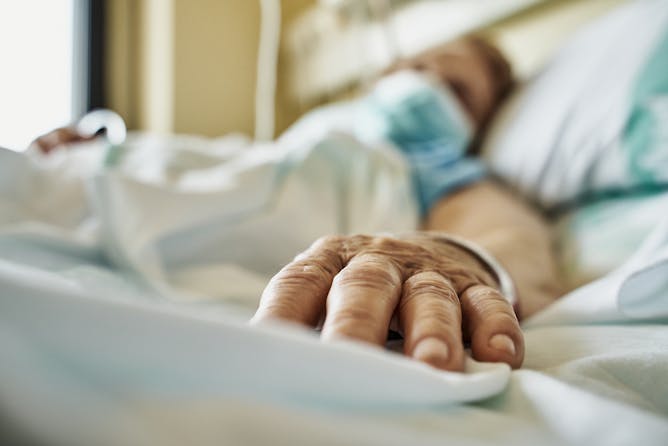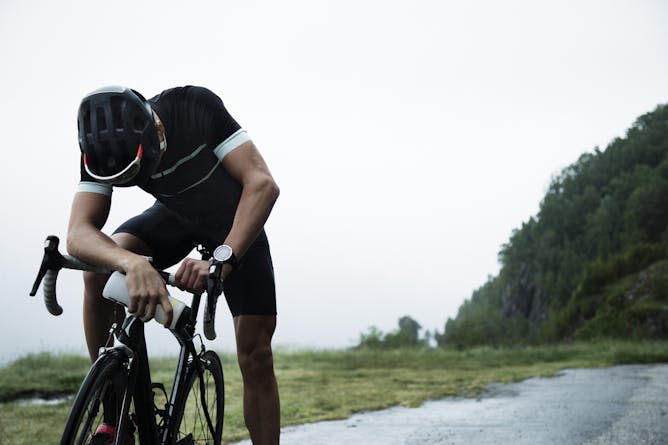|
Hospitals follow strict protocols to prevent infections, especially when it comes to the operating room. Every member of the surgical team scrubs up to their elbows and under their nails before carefully putting on their scrubs. Everything from the surgical instruments to the air of the operating room itself is sterilized until the operating environment is as antiseptic and aseptic as possible. And yet, while rates of many types of hospital-related medical complications have decreased over time, infections in the part of the body where the surgery occurs have remained stagnant.
New research, published today, adds another finger to what a growing body of evidence is pointing to as the probable culprit for these infections: the microbes that were already on your body before you stepped into the hospital.
In their study, anesthesiologist Dustin Long and infectious disease physician Chloe Bryson-Cahn at the University of Washington School of Medicine genetically analyzed the bacteria in patients undergoing surgery. They found 86% of bacteria causing surgical site infections were on the patients’ skin before the procedure. The majority of those previously harmless bacteria were also resistant to the antibiotics and antiseptics used before the surgery to prevent infection.
“The fact that most infections don’t actually start with sources in the hospital is probably a testament to the efficacy of these protocols,” they write. “But we believe that shifting toward more patient-centered, individualized approaches to infection prevention has the potential to benefit hospitals and patients alike.”
Also in this week’s science news:
If there’s a subject you’d like our team of science editors to investigate, please reply to this email.
|

Genetic analysis of the bacteria causing surgical site infections revealed that many were already present on the patient’s skin.
Ruben Bonilla Gonzalo/Moment via Getty Images
Dustin Long, University of Washington; Chloe Bryson-Cahn, University of Washington
Most infection prevention guidelines center on the hospital environment rather than the patient. But the source of antibiotic-resistant microbes is often from the patient’s own body.
|

Elite athletes show researchers the upper limits of a healthy metabolism.
Solskin/DigitalVision via Getty Images
Travis Nemkov, University of Colorado Anschutz Medical Campus
An elite athlete’s metabolism mostly looks different from a patient with COVID-19 − but their occasional similarities can reveal important insights into health and disease.
|

Thousands of galaxies, each containing billions of stars, are in this 2022 photo taken by the James Webb Space Telescope.
NASA/ESA/CSA/STScI
Adi Foord, University of Maryland, Baltimore County
Now out in space for more than two years, the James Webb Space Telescope is a stunningly sophisticated instrument.
|
|
|

Randall W. Parkinson, Florida International University
A coastal scientist explains why marshes, mangroves and other wetlands can’t keep up with the effects of climate change, and how human infrastructure is making it harder for them to survive.
| |

Gary Solar, Buffalo State, The State University of New York
The earthquake, one of New Jersey’s largest on record, could be felt from Maryland to Boston. But don’t read too much into it.
|

Courtney Graetzer, Vanderbilt University
Including the family in a patient’s treatment plan can help shorten hospital stays and assist in recovery. But caregivers often pay a price.
| |

Amanda Bao, Rochester Institute of Technology
A civil engineer lays out the physics behind Dali’s crash into the Francis Scott Key Bridge pier.
|
|
|
|
|
-
Hao Peng, Northwestern University
This bias in science journalism seems not to be due only to pragmatic concerns about time zones or the language spoken in the country where the scientist is based.
-
Evan Thomas Saitta, University of Chicago
Calcite, the material making up fossilized eggshells, may preserve amino acids better than bone.
-
John Kounios, Drexel University; Yvette Kounios, Widener University
Neuroscientists analyzed the brain waves of 32 jazz guitarists as they improvised to chords and rhythms. Their findings suggest 2 key principles support innovative thinking.
-
Ben Kravitz, Indiana University; Tyler Felgenhauer, Duke University
The big question: Would climate engineering like sending reflective particles into the stratosphere or brightening clouds help reduce the national security risks of climate change or make them worse?
|
|